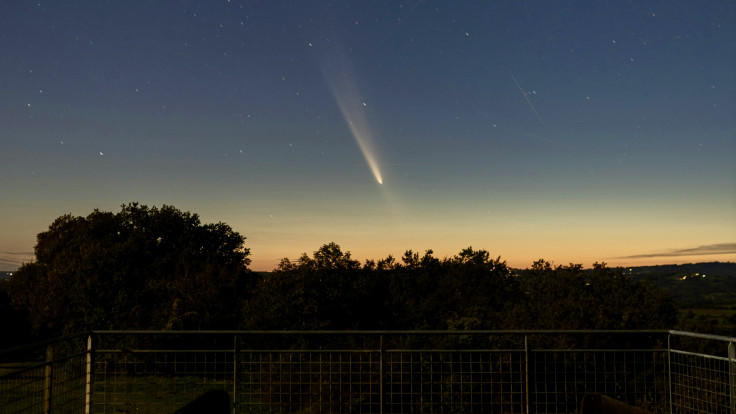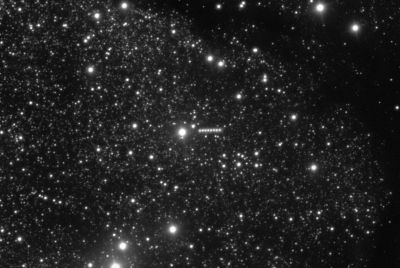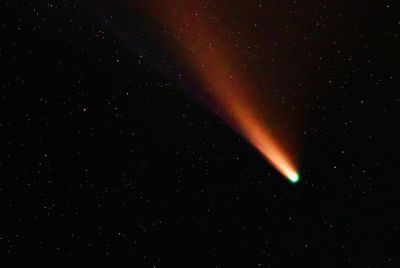Truth or AI Hoax? Shocking Photo From Argentina Claims to Capture 3I/ATLAS in Night Sky

A viral photo of interstellar object 3I/ATLAS allegedly glowing above Argentina's night sky has sparked global frenzy — and warnings from space experts.
The image, posted on 26 October 2025 by an account named @Atlas__CTO, appeared to show a streak of light cutting across the southern sky over Córdoba, Argentina.
Within hours, hashtags like #3IATLAS, #AlienSignal, and #ArgentinaSighting were trending worldwide.
But astronomers and image-forensics specialists now say the viral photo is almost certainly AI-generated, reigniting debate about misinformation in astrophotography.
Experts Warn of AI-Generated Space Fakery
According to IBTimes UK, the post claimed the image was taken 'facing south at 2:43 a.m.'
It depicted the interstellar object 3I/ATLAS — only the third confirmed visitor from outside our Solar System.
However, fact-checkers and amateur astronomers quickly raised doubts:
- Star patterns in the photo do not match Córdoba's southern sky.
- The user behind it has no record of scientific observation.
- Prior posts include AI-generated astronomy images.
Astrophotography expert Lucía Romero told La Nación the streak was 'far too clean' and lacked atmospheric blur seen in genuine long-exposure captures.
'It looks impressive, but it's a composite. The stars don't align with any known southern-sky field,' she said.
Observatory Networks Find No Matching Event
The European Southern Observatory (ESO) confirmed that no observatory or amateur network reported any object matching the description of the viral photo.
Image-analysis tools revealed pixel-pattern irregularities typical of synthetic rendering.
IFLScience noted several similar fake 3I/ATLAS images circulating online and reminded the public that the real object is too faint to see unaided.
NASA tracking data show that 3I/ATLAS can be observed only with large professional telescopes in the Southern Hemisphere — and even then, only as a dim, moving speck, not a glowing trail.
The Real 3I/ATLAS Explained
Discovered earlier this year by the Asteroid Terrestrial-impact Last Alert System (ATLAS), 3I/ATLAS is the third known interstellar object, after 2017's ʻOumuamua and 2019's 2I/Borisov.
According to NASA and the European Space Agency, it follows a hyperbolic trajectory — entering from beyond our Solar System and heading back into interstellar space.
Scientists believe it is an icy body a few hundred metres across, showing no artificial signals or materials in its reflected spectrum.
It will make its closest approach to the Sun later this year, becoming a target for coordinated telescope studies across the Southern Hemisphere.
'It's a fascinating object, but it's invisible to the naked eye,' said NASA planetary scientist Dr Helen Sato. 'Any brightly coloured sky photo claiming to show it is a fabrication.'
Why the Hoax Matters
The incident highlights the rising threat of AI-generated misinformation in science. As generative-image tools advance, false 'discoveries' can spread faster than verified data.
Experts urge audiences to check observatory databases and official agency feeds before sharing viral visuals.
Checklist for verifying astronomical images:
- Confirm time, coordinates, and telescope data.
- Cross-check with NASA's Near-Earth Object logs.
- Look for metadata or compression anomalies.
As NASA cautioned: 'If it looks spectacular enough to be science fiction, it probably is.'
The 3I/ATLAS photo from Argentina is a reminder that seeing is no longer believing in the digital era.
While the interstellar visitor itself is real, no credible photo of it has yet been captured from Earth. The stars may still hold mysteries — but this viral glow isn't one of them.
© Copyright IBTimes 2025. All rights reserved.





















